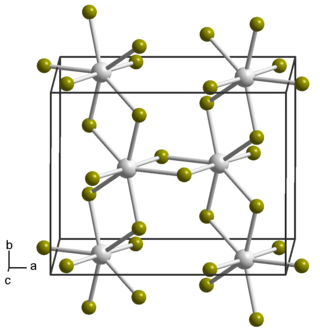The Beilstein database is a database in the field of organic chemistry, in which compounds are uniquely identified by their Beilstein Registry Number. The database covers the scientific literature from 1771 to the present and contains experimentally validated information on millions of chemical reactions and substances from original scientific publications. The electronic database was created from Handbuch der Organischen Chemie, founded by Friedrich Konrad Beilstein in 1881, but has appeared online under a number of different names, including Crossfire Beilstein. Since 2009, the content has been maintained and distributed by Elsevier Information Systems in Frankfurt under the product name "Reaxys".
The Journal of the Chemical Society was a scientific journal established by the Chemical Society in 1849 as the Quarterly Journal of the Chemical Society. The first editor was Edmund Ronalds. The journal underwent several renamings, splits, and mergers throughout its history. In 1980, the Chemical Society merged with several other organizations into the Royal Society of Chemistry. The journal's continuity is found in Chemical Communications, Dalton Transactions, Faraday Transactions, and Perkin Transactions, all of which are published by the Royal Society of Chemistry.
Chemical nomenclature is a set of rules to generate systematic names for chemical compounds. The nomenclature used most frequently worldwide is the one created and developed by the International Union of Pure and Applied Chemistry (IUPAC).
The National Academy of Sciences Award in Chemical Sciences is awarded for innovative research in the chemical sciences that in the broadest sense contributes to a better understanding of the natural sciences and to the benefit of humanity.

The CRC Handbook of Chemistry and Physics is a comprehensive one-volume reference resource for science research. First published in 1914, it is currently in its 105th edition, published in 2024. It is known colloquially among chemists as the "Rubber Bible", as CRC originally stood for "Chemical Rubber Company".

Bismuth titanate or bismuth titanium oxide is a solid inorganic compound of bismuth, titanium and oxygen with the chemical formula of Bi12TiO20, Bi 4Ti3O12 or Bi2Ti2O7.

Pentamethyltantalum is a homoleptic organotantalum compound. It has a propensity to explode when it is melted. Its discovery was part of a sequence that led to Richard R. Schrock's Nobel Prize winning discovery in olefin metathesis.

3-Penten-2-one is an organic compound with the formula CH3C(O)CH=CHCH3. It exists as (E) and (Z) stereoisomers. The compound is classified as an α,β-unsaturated ketone. It is a colorless volatile liquid with fruity to pungent odor.

Ytterbium(II) fluoride is a binary inorganic compound of ytterbium and fluorine with the chemical formula YbF2.

Berkelium(III) iodide is a binary inorganic compound of berkelium and iodine with the chemical formula BkI3.

Iodine dioxide is a binary inorganic compound of iodine and oxygen with the chemical formula IO
2. Only stable as a dilute gas, this compound is one of many iodine oxides, and "iodine dioxide" is sometimes used to describe its formal dimer, the salt diiodine tetroxide (I2O4, [IO]+[IO3]−).
Einsteinium fluoride is a binary inorganic chemical compound of einsteinium and fluorine with the chemical formula EsF3.

Tetrachloroethylene oxide, perchloroethylene oxide (PCEO) or tetrachlorooxirane, is the perchlorinated analogue of ethylene oxide and a proposed metabolite of tetrachloroethylene. It is a halogenated epoxide with the formula C2Cl4O. Tetrachloroethylene oxide is fairly stable but rearranges to trichloroacetyl chloride at higher temperatures.
Berkelium(II) oxide is a binary inorganic compound of berkelium and oxygen with the chemical formula BkO.
Americium trihydride is a binary inorganic compound of americium and hydrogen with the chemical formula AmH3.

Neptunium tetrabromide is a binary inorganic compound of neptunium metal and bromine with the chemical formula NpBr4.
Thorium triiodide is a binary inorganic compound of thorium metal and iodine with the chemical formula ThI3.

Ammonium hexafluoroarsenate is an inorganic chemical compound with the chemical formula NH4AsF6.










